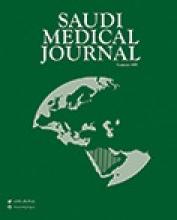Abstract
OBJECTIVE: To evaluate the relationships between community acquired infections in elderly cases (>/=65 ages) not living in a nursing home and factors such as, fever and white blood cell (WBC) counts; age, gender and the presence of underlying chronic diseases as compared to the length of stay.
METHODS: We conducted this study in Dokuz Eylul University Hospital in Turkey as a defining cross-sectional research covering a 5-year period between January 1999 and December 2003. The data of 240 elderly cases were investigated, forms, which includes gender, existence of chronic diseases, fever, WBC counts, diagnosis, applied treatment and prognosis were prepared, and results were presented.
RESULTS: The most frequently encountered infections were urinary system infections (35.4%), acute gastroenteritis (17.9%), pneumonia (15.9%) and soft tissue infections (13.3%). We observed that WBC counts were significantly elevated, parallel with high fever (p=0.021). In elderly cases we determined the existence of underlying disease and that living in the community lengthens the hospital staying periods (p=0.001). It was determined that elderly patients with an elevated WBC are 2.02 times more likely to have a temperature of 38.3OC or higher compared with patients with a normal temperature (p<0.05).
CONCLUSION: There was a strong association between leucocytosis and high fever in elderly cases. However, the absence of fever and leucocytosis in 78 (32.5%) of our cases, makes it hard for us to decide whether there was an infection or not. The most frequently encountered infections in elderly cases living in the community were similar to those living in nursing homes. These cases must be followed in the geriatric wards of hospital or geriatric hospitals whenever possible.
- Copyright: © Saudi Medical Journal
This is an open-access article distributed under the terms of the Creative Commons Attribution-Noncommercial-Share Alike 3.0 Unported, which permits unrestricted use, distribution, and reproduction in any medium, provided the original work is properly cited.






